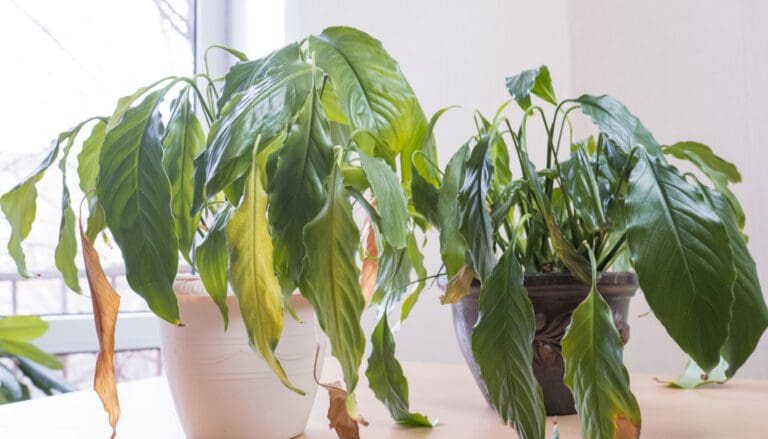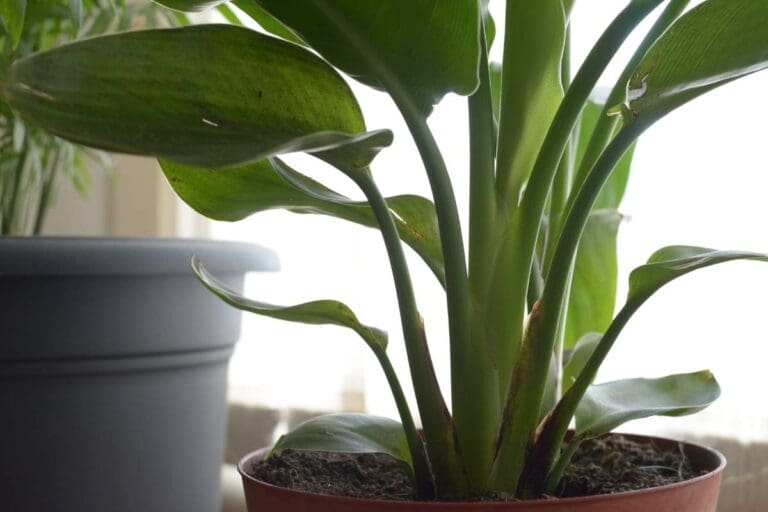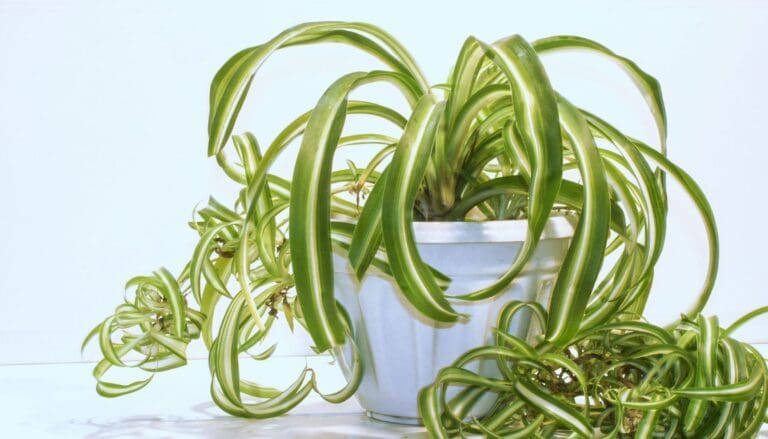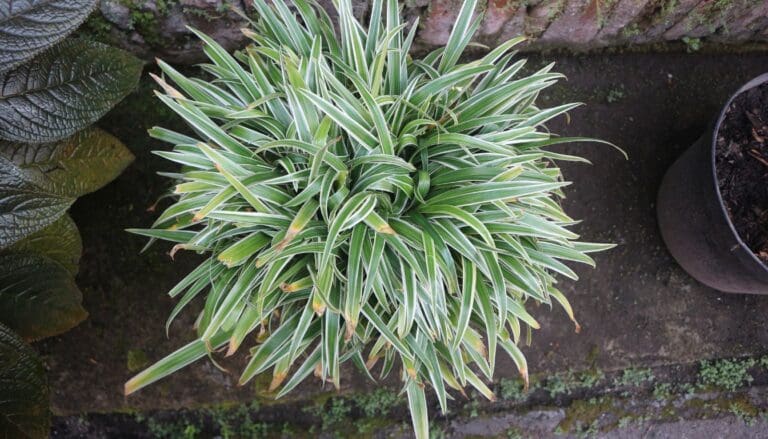Why Is My English Ivy Turning Red? (Causes+Fix)
English Ivies are attractive climbing plants, popular for their green, heart-shaped leaves. They are hardy plants that are easy to grow and take care of. However, that doesn’t mean they won’t ever have any problems. One problem that I faced with my English ivy was red leaves.
A phosphorous deficiency is the primary cause of red leaves in your English Ivy. Various factors such as wrong pH soil, improper watering, and temperature fluctuations can cause this. To fix this problem, fertilize the Ivy with a phosphorus-rich fertilizer and ensure an ideal pH level.
This article will dive into the reasons that cause the leaves of your English Ivy to turn red. I will also discuss the solutions to these issues and the basic care tips for your English Ivy.

Please note: Simplify Plants is reader-supported. Some links in the post are affiliate links and I get a commission from purchases made through links in the post.
Why Has My Ivy Turned Red?
Finding red leaves on your English Ivy can be shocking and heartbreaking at the same time, especially when you don’t know the reason.
The red pigments can result from an issue in the soil or when your Ivy is exposed to unfavorable conditions.
To fix the red leaves, you need to identify the underlying cause by looking at the other signs.
Let us now discuss the possible reasons behind red leaves.
Lack of phosphorous in the soil
It is common for Ivy leaves to change their colors due to the lack of phosphorous in the soil.
Phosphorous is important as it converts the nutrients into building blocks the plant uses for growth.
Phosphorous deficiency will cause the leaves to turn yellow first, then red or slightly brown in the later stages.
If there is very little phosphorus in the soil, it will travel to the new leaves, neglecting the old ones.
These leaves will eventually show red pigments due to phosphorous deficiency.
This deficiency will also cause the slow growth of your English Ivy.
How to fix phosphorous deficiency?
- To fix phosphorous deficiency, test the soil’s pH level before fertilizing the ivy plant.
- If the pH of the soil is too high or low, then flush the soil using pH water containing phosphorous. It will remove any salt that impacts the plant’s phosphorous absorption to rectify the pH range.
- If too many nutrient salts are present in the soil, you must change the entire soil with a fresh potting mix with the ideal pH range.
- After changing the soil, fertilize the plant with a cup of phosphorous fertilizer. You can prepare a phosphorous fertilizer by using compost and bone meal. Compost is high in nitrogen and phosphorous, whereas bone meal is a slow-release fertilizer that is high in phosphorous and low in nitrogen.
- Avoid overwatering your Ivy when it is recovering. Also, ensure the temperature is correct around your plant.
Soil PH too high or low
English ivies grow best when the soil has optimum pH balance.
It prefers the soil pH level to be slightly acidic, from 6.0-7.5.
The soil pH level needs to match the requirements of the Ivy.
Without proper pH, the plant will be unable to absorb nutrients efficiently, including phosphorous absorption.
Phosphorous is a sensitive nutrient that will not reach the plant if the soil’s pH level is not ideal.
In such a condition, other minerals will react in a way that stops the plant from absorbing phosphorous properly.
Ivy leaves will show red pigments due to a lack of this nutrient, especially when they require more phosphorous than the soil will allow.
How to maintain the right pH level of soil?
You can test the pH level of the soil by using pH test strips.
Add a little bit of the potting soil to a cup of water and mix it up.
Dip a pH strip into the water and check its color.
You may see the following results:
- Blue strip: Acidic soil
- Yellow strip: Neutral soil
- Red strip: Alkaline soil
If your soil is too acidic or alkaline, add high-quality compost to fix its pH level.
It is because compost has a neutral PH that will neutralize alkaline and acidic soil.
Overwatering and underwatering

Improper watering can indirectly cause red pigmentation in the leaves as it will disrupt the movement of essential nutrients, including phosphorous.
This can happen both in the case of overwatering and underwatering.
If you underwater your Ivy plant, the roots will have a hard time transferring the phosphorous to the leaves, causing redness.
On the other hand, if you overwater your Ivy plant, the phosphorous will wash away from the soil.
Without phosphorous, the sugar will start to build up in the roots causing red pigmentation in the leaves.
How to fix underwatering?
- To fix underwatering, give your ivy plant a good drink. You can poke some holes into the soil and water the plant until the excess water starts flowing through the drainage holes.
- If the soil is compact, take your Ivy out of the pot and put it in a water-filled bucket or container. Allow the soil to soak in water for a few minutes until it turns moist. Afterward, put your plant back into the pot and keep it in a well-lit area.
- Never let the soil dry out completely.
- Always check the soil before watering your ivy. Water the plant only when the top 2 inches of the soil go dry.
How to fix overwatering?
- If your Ivy plant is overwatered, stop watering and wait for the soil to dry.
- Keep the plant in a bright spot, so the excess moisture evaporates quickly from the soil.
- But if the condition of your plant isn’t improving, you need to repot it in a fresh soil mix after pruning all the infected roots and unhealthy parts.
- Repot the plant in a pot with drainage holes, so the excess water doesn’t remain in the soil.
- Avoid fertilizing and watering your plant when it is recovering.
- After the plant recovers, water it only after checking the soil’s moisture level. Do it using the finger method or a moisture meter.
Temperature fluctuations
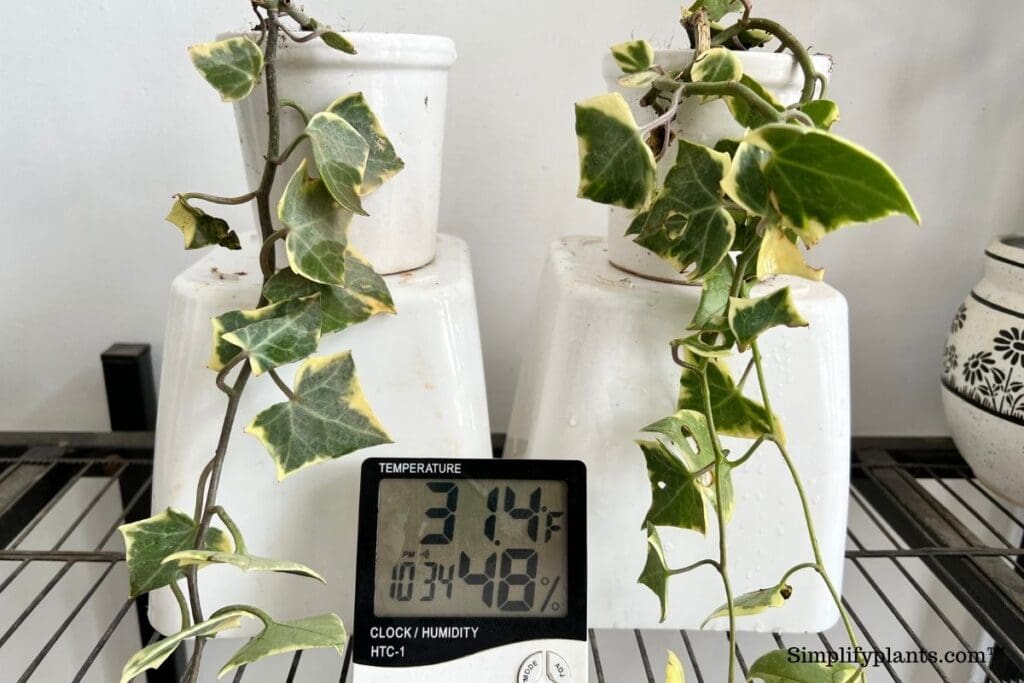
English Ivies prefer to grow in temperature between 70-90°F.
They don’t like too cold or too hot temperatures.
Any temperature below 40°F will stimulate red pigments in their leaves.
The cold air of the winter or fall cause can freeze the soil, due to which the leaves might show red pigmentation.
In this case, the leaves will not completely turn red but will only get a reddish tint.
Similarly, strong heat can also cause this issue.
When temperatures are high, the leaves will lose moisture faster and will suffer from dehydration, resulting in red pigmentation in leaves.
How to maintain the ideal temperatures for Ivy?
- Keep your Ivy away from hot and cold drafts to prevent temperature stress.
- Avoid keeping your ivy plant near objects such as heating vents, radiators, chimneys, stoves, fireplaces, etc.
- Avoid keeping your Ivy plant near leaking windowsills and frosty doors during winters. Also, don’t keep it near air conditioners, refrigerators, or coolers.
- Never keep the plant near any doors or windows that frequently open and close to prevent temperature fluctuations.
- You can use a thermostat to maintain the temperatures around your Ivy.
Bacterial leaf spots
If the redness is not present in the entire leaf and only in some parts, it indicates that it is not due to a soil or care problem but a disease.
Some bacteria and fungi can cause leaf spots.
The fungi do not cause redness, but the bacteria can do so.
Your Ivy plant has bacterial leaf spots if you notice brown spots on leaves with red corners.
Getting rid of the disease is usually difficult, and you need to work more on your plant’s general health to allow it to recover from such infections.
Misconception
Plant owners commonly mistake one Ivy variant for another.
Such mistakes usually happen to an inexperienced eye.
It is because different varieties of Ivy look similar, even though they differ in physical properties.
If you have planted your ivy plant during the summer and notice that its leaves have turned red in the autumn, you could have grown a Boston ivy and not an English Ivy.
English Ivy is an evergreen plant that will never turn red, but Boston Ivy, a non-evergreen plant, will turn red during autumn, and its leaves will drop eventually.
How to prevent red leaves in your English Ivy plant?
English ivy is a versatile plant that grows well both indoors and outdoors, although they thrive better in outside conditions.
The indoor condition may be too dry or warm for the plant.
However, you can grow an English Ivy well in the indoor environment if you provide it with proper care.
You can prevent the redness by providing appropriate growing conditions.
Since this plant is a trailing variety, they will like to grow in moist conditions and bright, indirect light.
Here are a few care tips you can follow to prevent redness in your English Ivy plant.
- During summers, avoid keeping the Ivy plant near a place that allows direct sunlight. Otherwise, the leaves quickly dry out. Whereas in winters, you can provide the plant with some hours of direct sunlight when light levels are low.
- English ivy prefers to grow in soil that stays moist but not soggy. Make sure the soil for your plant is well-draining and fertile with plenty of added nutrients.
- Try to maintain a humid environment around your Ivy plant. You can raise humidity by frequently misting the leaves, using a humidifier device, or by grouping them with other plants in your house.
- English Ivy likes to thrive in moderate temperatures and mild weather conditions. It doesn’t like excessive heat, cold weather, strong wind, or very low humidity. So, to ensure a plant’s healthy growth, it is important to keep everything in moderation. Keep your plant in an area where temperatures are consistent, neither too hot nor too cold.
- Ivy will require some fertilization during the spring and summer when it is actively growing. Fertilize the plant with a well-balanced water-soluble fertilizer with an NPK ratio of 20:20:20.
- Make sure that the soil has enough phosphorus for your Ivy plant to avoid any kind of red pigmentation on the leaves.
Final words
Before looking for the solution to the problems discussed in this article, check which type of ivy plant you have in your house. If you have Boston Ivy, you should not worry as the leaves will turn red during the fall, which is one of its main features.
But if you have English Ivy, then you should do a detailed investigation to find the cause behind the red leaves. The primary cause behind the red pigments in English Ivy leaves is a phosphorous deficiency. You can prevent this deficiency by testing the soil and making sure that you are using the appropriate soil type for your plant.
Provide your English Ivy plant with proper care and sufficient nutrients for healthy and happy growth.
Reference: Researchgate, University of Tennessee, Mississippi State University, Central Florida Research and Education Center, U.S. DEPARTMENT OF AGRICULTURE.
Recommended Garden Supplies
| Product Image | Our Recommended Gardening Supplies | Check Offers! |
|---|---|---|
Top Top
Top
Top
Top
Top
Top
Top
Top | rePotme Houseplant and Tropical Classic Potting Soil Mix | Check Offer On Amazon |
 Top
Top
Top
Top
Top
Top
Top
Top | Espoma Organic Indoor Plant Food | Check Offer On Amazon |
 Top
Top
Top
Top
Top
Top
Top
Top | GooingTop LED Grow Light 6000K Full Spectrum Clip Plant Growing Lamp | Check Offer On Amazon |
 Top
Top
Top
Top
Top
Top
Top
Top | Soil Moisture Meter | Check Offer On Amazon |
 Top
Top
Top
Top
Top
Top
Top
Top | Govee Hygrometer Thermometer, Bluetooth Enabled! | Check Offer On Amazon |
 Top
Top | LEVOIT Humidifiers for Large Room(Best For Plants) | Check Offer On Amazon |
 Top
Top
Top
Top
Top
Top
Top
Top | Upgraded DIY Automatic Drip Irrigation Kit, 15 Potted Houseplants Support | Check Offer On Amazon |
 Top
Top
Top
Top
Top
Top
Top
Top | Stainless Steel Heavy Duty Gardening Tool Set | Check Offer On Amazon |
 Top
Top
Top
Top
Top
Top
Top
Top | Bonide Insecticidal Soap | Check Offer On Amazon |
 Top
Top
Top
Top
Top
Top
Top
Top | Bonide 32 oz Spray Neem Oil for Organic Gardening | Check Offer On Amazon |
 Top
Top
Top
Top
Top
Top
Top
Top | Garden Safe Fungicide | Check Offer On Amazon |

